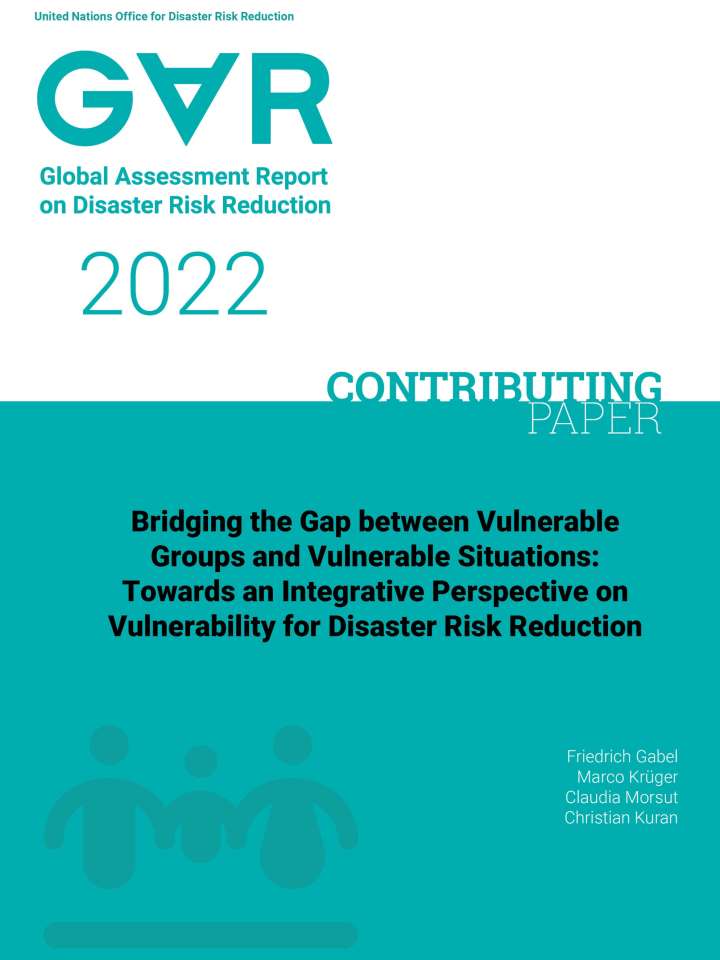Bridging the gap between vulnerable groups and vulnerable situations: Towards an integrative perspective on vulnerability for disaster risk reduction
This contributing paper explores the concept of vulnerability which, despite official definitions it argues, remains highly contested with regard to its conceptualization and operationalization. This study treats this not only as a pragmatic question of how vulnerability can be approached in the best way for the strengthening of society but also the fundamental questions of who is deemed vulnerable for what reasons, what creates vulnerability and how vulnerability can be measured. Two approaches are at the core of the discussion: (a) a group narrative, which assumes vulnerability to be a consistent, unchangeable and thus naturalised ontological characteristic of certain entities such as individuals or sociodemographic groups and (b) a narrative assuming vulnerable situations to be a dynamic characteristic of all potential entities. This study argues that both require scrutiny of the shortcomings they entail.
This study argues for a combination of the two aforementioned approaches, with the aim of creating an understanding of vulnerability grasping it as the result of the interactions and interdependencies of individual capacities and societal structures in different fields while, at the same time, allowing for its active use in disaster risk reduction. This would encompass at least four steps: adjusting how vulnerability is spoken about, a stronger linkage of disaster and social politics, an improved disaster risk governance, a local turn towards community-related ways of operationalizing vulnerability, and a shift to challenges and situations.
